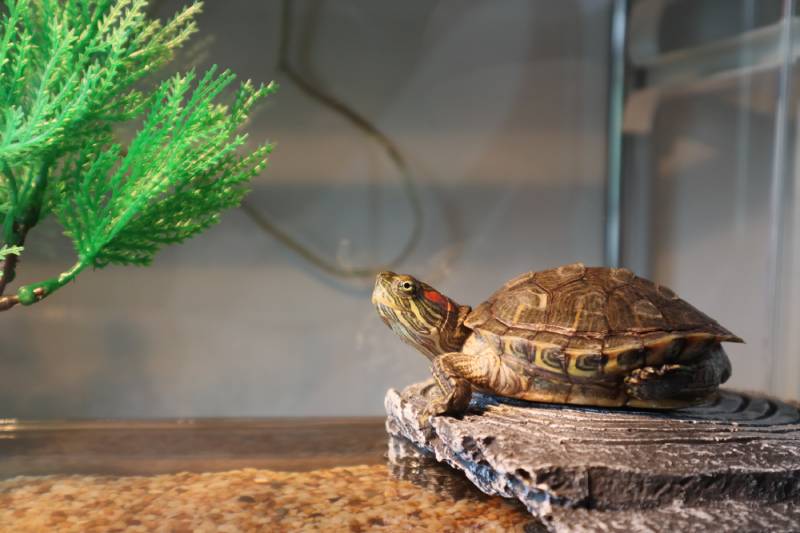How to Tell If a Tortoise Is Dead: 9 Vet-Reviewed Signs to Look For
Updated on
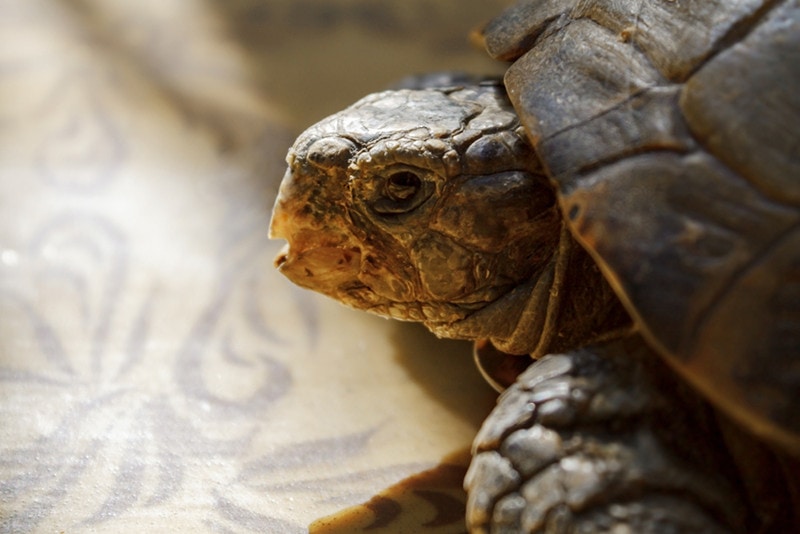
Tortoises are interesting little creatures that people love to keep as pets. Although not as active as many other animals, tortoises can be fun companions with unique traits, including that they brumate during winter.
Brumation is a process in which tortoises pull their head and legs into their shell and burrow into soft soil before entering a state of low activity, as a survival mechanism during cold months. For many first-time owners, a tortoise in brumation may often seem dead, as their movements and activity are limited. Therefore, you should know how to verify whether your tortoise is alive or not.
In this article, we talk more about tortoises and their brumation process and go through nine signs to look for to determine if a tortoise is dead.
The 9 Signs That Your Tortoise Is Dead
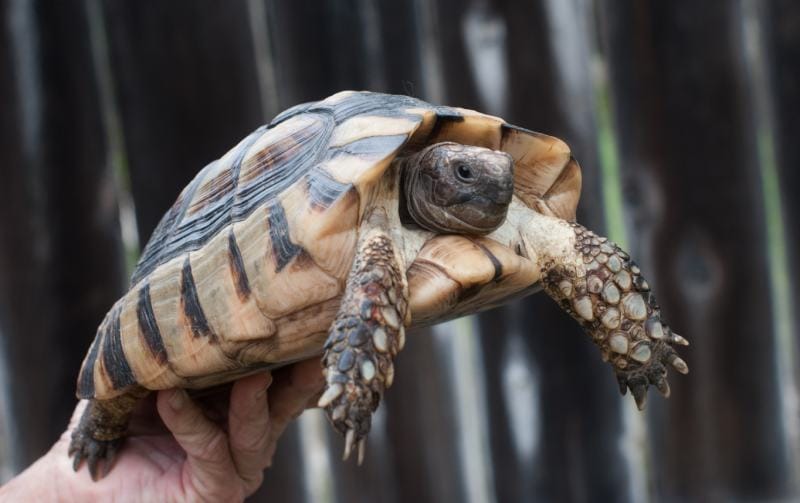
1. The Tortoise Is Cold to the Touch
Tortoises are cold-blooded animals, meaning they rely on external heat sources to regulate their body temperature. Therefore, your tortoise should always have a reliable heat source, even during brumation. Their temperature will likely lower during that time, as their body enters survival mode. They should still have a bit of warmth, though, and their body shouldn’t be cold to the touch.
If a tortoise’s body is cold when you touch it, that may indicate that the tortoise is dead. Still, you should check for other signs of death to verify whether your tortoise is alive completely.
2. The Tortoise’s Eyes Have Sunken
Healthy, alive tortoises have clear, bright eyes that are wide open; the eyes of a dead tortoise are typically sunken.
However, although sunken eyes may indicate that your tortoise is deceased, they can also be a sign of dehydration in live tortoises. Therefore, always look for additional signs of death, or speak with a veterinarian with experience treating exotic animals.
3. Flies and Maggots Are Infesting the Tortoise’s Body
A clear indicator that a tortoise is dead is flies and maggots on their body. Although tortoises can get attacked by flies when brumating, since their whole system slows down, those situations are quite rare.
But flies always attack sick or dead tortoises, a situation called fly strike. The flies attack the tortoise, laying eggs in their body that later form into maggots that infest the corpse.
Even if a tortoise is alive but sick and becomes a victim of fly strike, the prognosis is bad, and most tortoises die from this condition.
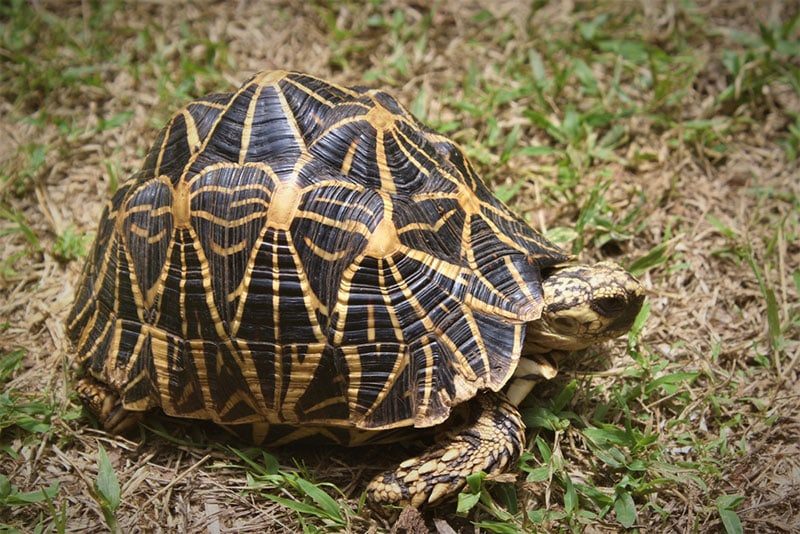
4. There’s No Response to Stimulation
A brumating tortoise will enter a state of inactivity, as this is how their body prepares for survival during winter. They typically won’t move until brumation is done, and they will safely stay in one place, waiting for the weather to improve.
This behavior may appear strange to people who are unfamiliar with brumation, and they may think that the tortoise is dead. In such situations, you should check whether your tortoise reacts to stimulation.
Tortoises will respond to stimulation even when brumating if you intentionally touch them; you can pull their legs, flip them over, move them, or press their cloaca.
If you try one of these tricks, but there’s no response to stimulation from your tortoise, they make no movement, and they do not react to you in any way, it’s more likely that your little friend is unfortunately dead.
5. A Bad Odor Is Coming From the Tortoise
Tortoises naturally don’t have a bad odor, and you typically won’t smell them if you take good care of them. While it’s possible for tortoises to develop a foul odor when kept in inadequate conditions, that stink usually comes from dirty water and food residue. If the smell comes directly from your tortoise and they are not moving around, there’s a big possibility that they are dead.
When tortoises die, their bodies slowly decompose, leading to a rotten smell. That said, bad odors can also come from live but sick tortoises, so it’s always good to check for additional signs of death before determining that your tortoise is alive.
When in doubt, check in with a vet with experience treating tortoises, as they will help you verify if your tortoise is dead or just sick.
6. The Tortoise’s Skin Is Dry, Shriveled, and Sunken
If your tortoise’s skin appears dry, shriveled, and sunken, that may be a sign that they are dead. Healthy, alive tortoises have healthy skin even during brumation, so this appearance is not normal for tortoises that are well.
Tortoises typically experience these skin issues when decomposing, indicating that your tortoise is probably dead and not brumating. You can also look for other signs of death; check their eyes, legs, and shell, and try stimulating your tortoise. If there’s no response and your tortoise appears dehydrated with a rotten shell and sunken eyes, they are not alive.

7. The Tortoise Has Limp Legs
Although tortoises may appear dead when brumating, they are still alive, meaning their muscles are still functioning. If your tortoise is not moving and appears dead, try to move or pick up their legs. They will react when you move them or pick them up, as the tortoise can still respond to external stimulation. However, if you try to do this to a dead tortoise, you’ll notice that their legs are limp and will only lifelessly make movements as you shift them around.
8. The Tortoise’s Skin or Shell Are Rotten
Tortoises have hard, smooth shells that should feel firm when you touch them. When tortoises enter the brumation process, their shell may become slightly softer, but there shouldn’t be any sign of rot.
If you notice that a tortoise’s skin or shell is rotten, it’s likely that they are dead, as this typically happens during the decomposition of the tortoise’s body.
9. The Tortoise Is Not Breathing
Although tortoises are inactive while brumating, they are alive, meaning they’re still breathing. So, checking to see whether your tortoise is breathing or not may be one of the easiest ways to tell if they are dead.
To check if your tortoise is breathing, take a small feather or similar object, and place it in front of their face. If the tortoise is alive and breathing, you’ll notice small movements on the surface of the feather/object.
Remember that tortoises and their body systems slow down during brumation, so you should be patient and wait for a while before determining if your tortoise is breathing.
Does Brumation Resemble Death in Tortoises?
While some animals, such as bears, go through hibernation in the winter months, many reptiles, including tortoises, go through brumation, a period of dormancy that typically starts around October and lasts until April.
Brumation may often resemble death in tortoises because they typically don’t move or eat during this period; however, they are very much alive. Not all pet tortoises will go through brumation, and there are ways to prevent it from happening. If this is something that you’re concerned about, talk to your vet.
In any case, it’s essential to learn what death actually looks like in tortoises and how to recognize the signs that a tortoise is dead.
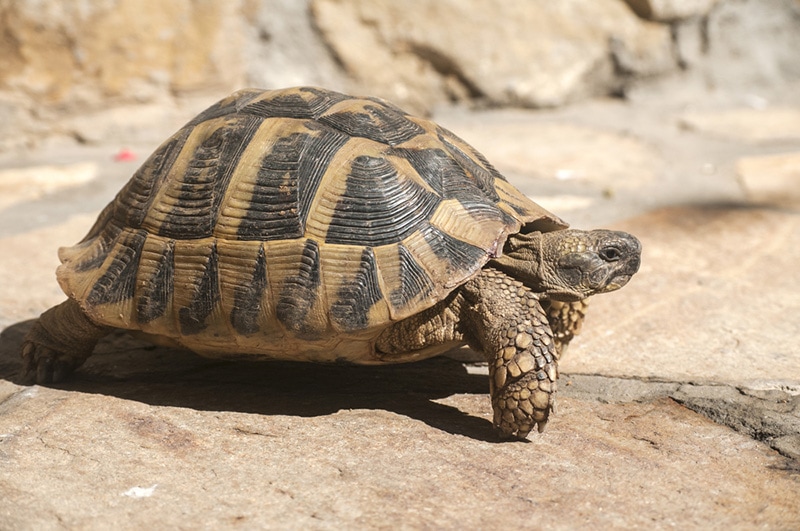
Conclusion
Since many people tend to mix the signs of brumation with death in tortoises, it’s beneficial to know how to set these two states apart when you’re a tortoise owner. Dead tortoises are entirely inactive and will likely have sunken eyes, dry skin, bad odor, and a decomposing body. If you suspect that your tortoise is dead, go through all the signs on this list to confirm their current state.
If you’re still unable to determine if your tortoise is dead, talk to an expert in exotic pets to get a diagnosis for your little friend.
Featured Image Credit: Laura Crazy, Shutterstock





